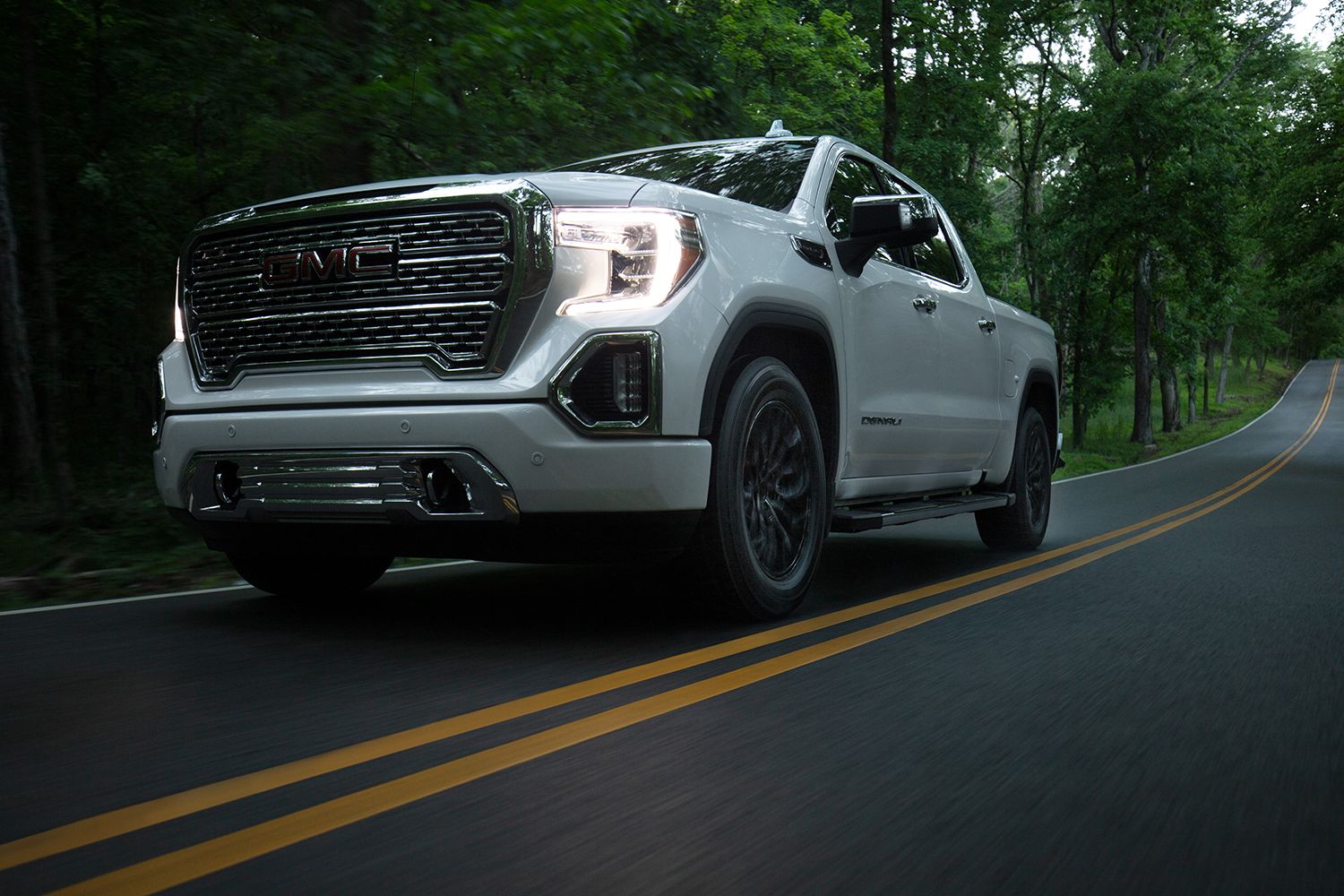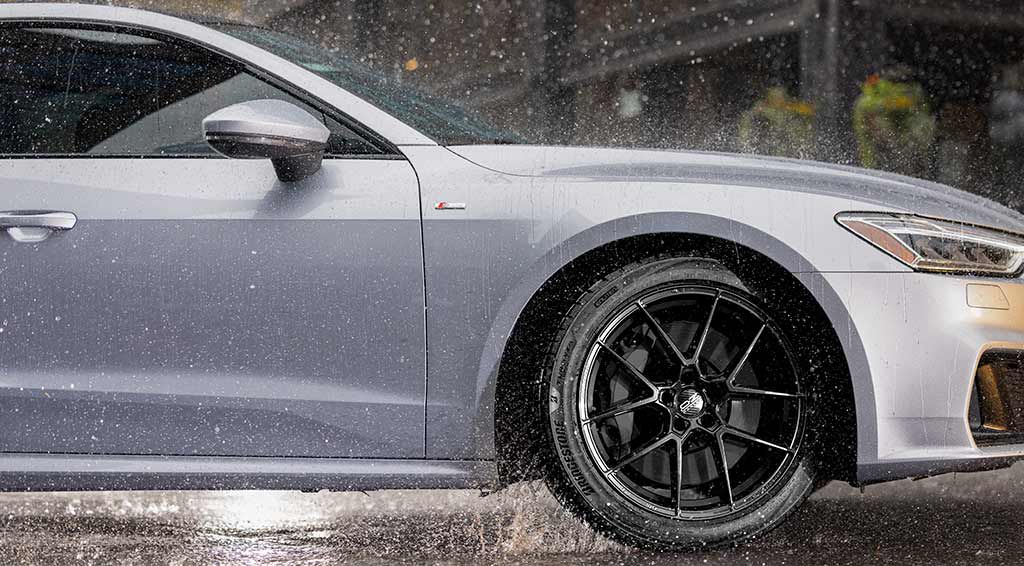If you’re looking to save money at the pump, you might not immediately think about your tire pressure — but maybe you should. Could something as simple as air in your tires really affect your fuel economy? The connection might surprise you.
Read on to learn about the relationship between tire pressure and gas mileage — from why proper tire pressure matters to how many miles per gallon you could be leaving on the road.
Does Tire Pressure Affect MPG?
Yes — tire pressure and fuel economy are related, and properly inflated tires help increase gas mileage. When your tires aren’t at the proper pressure, your engine is working harder to move the same speed and distance. This means more fuel consumption and, ultimately, lower MPG. So, if you’ve noticed that your vehicle is less fuel efficient than normal, checking your tire pressure should be one of your first troubleshooting steps.
How Does Low Tire Pressure Affect Gas Mileage?
When your tires are underinflated, they generate more rolling resistance — the force that opposes their movement as they roll along the road. You’ve probably noticed this if you’ve ever ridden a bike with half-flat tires — you pedal twice as hard but don’t seem to make as much progress as you should. This happens because underinflated tires flex more, increasing the energy lost to deformation and friction. Because of this power drain, even a small pressure drop can significantly impact your vehicle’s fuel economy.
How Much Can Low Tire Pressure Affect Gas Mileage?
Low tire pressure significantly impacts fuel efficiency. According to the US Department of Energy, for every 1 PSI drop in average tire pressure, gas mileage can decrease by 0.2%. The department also claims that you can improve your gas mileage 0.6%–3% by inflating tires to the proper pressure. So, if your vehicle gets 32 MPG, you could improve your fuel efficiency by .192–.96 MPG just by airing up your tires. That may not sound like much, but it adds up!
Firestone Complete Auto Care Tip: Many drivers rely on their tire pressure monitoring system (TPMS) to inform them of low tire pressure. However, those systems typically only engage when tire pressure drops 25% below the recommended PSI. As such, we recommend using a tire pressure gauge to check your tires regularly for maximum fuel efficiency and safety.
Other Effects of Low Tire Pressure
Besides reducing fuel efficiency, driving with low tire pressure can cause a whole host of other problems, including:
- Uneven Tire Wear: Underinflated tires wear out faster on their edges than in their centers, causing premature wear. This may require you to buy new tires sooner than expected.
- Longer Stopping Distances: You’d think that a higher rolling resistance would result in faster stopping times, but the opposite is true. Poorly inflated tires don’t grip the road as well due to the excessive deformations we mentioned earlier.
- Blowouts: Premature wear and excessive heat buildup from underinflation can lead to sudden tire failure. Note that tire blowouts are not the same as flat tires — they are catastrophic miniature explosions that can eject tire tread at high enough speeds to damage your vehicle’s body and even cause you to lose control.
- Sluggish Handling: Low tire pressure can also affect vehicle stability and make steering less responsive due to the excess energy it absorbs through deformation.
To avoid these issues, we recommend checking and inflating your tires to the proper pressure at least once a month and before long trips. If you’re unsure what the correct PSI for your tires is, you can consult your owner’s manual or use our helpful guide to finding the correct tire pressure for your vehicle.
Firestone Complete Auto Care Tip: If you have to fill your tires more than once a month, they may have a more serious issue, such as a slow leak. Before you keep driving, read this blog post to answer the question, “Why Do I Keep Getting Flat Tires?”
Can You Over Inflate Tires for Better Gas Mileage?
You may be thinking, “If low tire pressure increases rolling resistance, wouldn’t overinflating tires minimize rolling resistance and increase fuel economy?” In theory, you’d be correct. But overinflating your tires to save a few pennies on gas is like drinking ten cups of coffee to get more work done — it might work for a bit, but the consequences can hit hard.
Overinflation can reduce traction, worsen ride quality, and increase the risk of blowouts. To ensure optimal performance and longevity, we recommend focusing on tire maintenance, such as proper inflation and tire rotations, instead of filling your tires until they’re ready to burst.
Firestone Complete Auto Care Tip: If you’re noticing a sudden drop in fuel efficiency, your tires themselves may not be to blame — other factors, like seasonal changes, can affect gas mileage, too. Read about what causes poor gas mileage in cold weather to see how temperature changes can affect tire pressure and fuel economy.
The Bottom Line: Regular Tire Maintenance Pays Off
Tire pressure isn’t just about saving money on fuel — it’s about safety, performance, and longevity. Taking a few minutes each month to check your tires and adjust accordingly can lead to better gas mileage, improved ride quality, and longer-lasting tires.
If you need help with tire inflation or maintenance, Firestone Complete Auto Care can help. Our alignment, tire rotation, balancing, repair, and replacement services can ensure that your vehicle stays where it belongs — on the road. Schedule an appointment today and visit your nearest Firestone Complete Auto Care for tire services to keep your vehicle running efficiently and safely.



